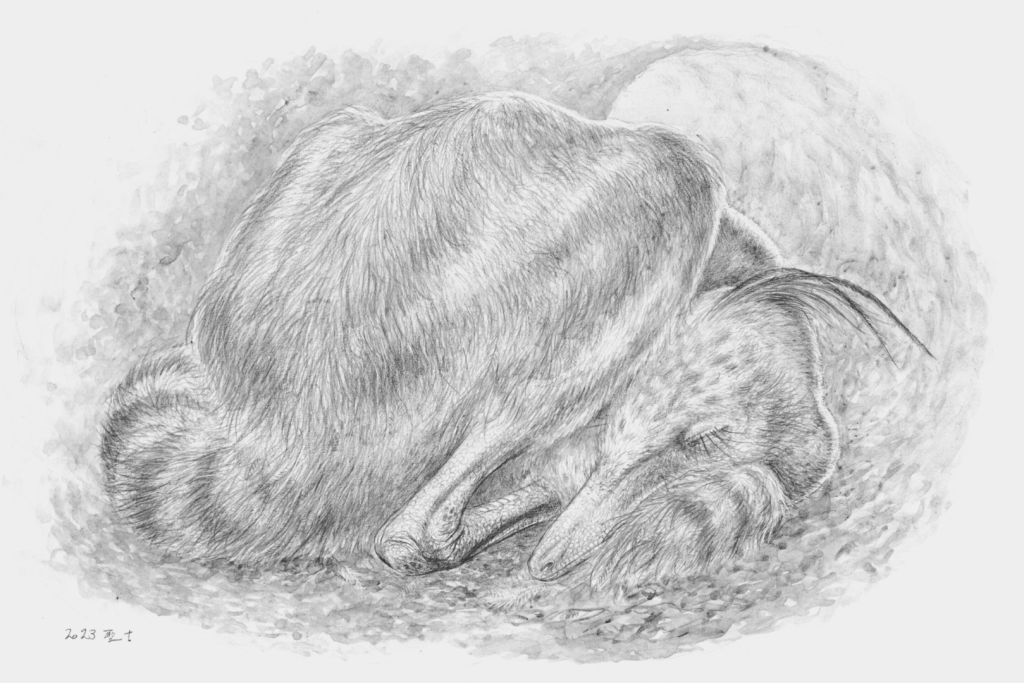At a Glance
- Scientists have discovered a new species of dinosaur, Jaculinykus yaruui, that shares a sleeping position with modern birds.
- The fossil, found in Mongolia’s Gobi Desert, belongs to the Alvarezsauridae family, previously thought to be flightless birds but now classified as non-avian Maniraptoran dinosaurs.
- The fossil is nearly complete and well-preserved, providing valuable insights into the anatomy and behavior of this dinosaur species.
- J. yaruui stood at approximately one meter tall and weighed around 30 kilograms.
- The dinosaur’s unique sleeping position, with its neck and tail bent and hind limbs folded, suggests that Maniraptorans may have adopted similar sleeping positions for comfort and heat preservation, providing evidence of bird-like traits among avian ancestors.

A team of scientists from Hokkaido University, the Hokkaido University Museum, North Carolina State University, and the Mongolian Academy of Sciences has discovered a new species of dinosaur that shares a sleeping position with modern birds. The fossil, named Jaculinykus yaruui, belongs to the Alvarezsauridae family, which were previously thought to be flightless birds but are now classified as non-avian Maniraptoran dinosaurs. The fossil was found in the Barun Goyot Formation in Mongolia’s Gobi Desert and is estimated to be around 71 million years old.
The fossil is exceptionally well-preserved, providing valuable insights into the anatomy and behavior of this dinosaur species. J. yaruui stood at approximately one meter tall and weighed around 30 kilograms. What sets this fossil apart is its unique sleeping position. The dinosaur’s neck and tail were bent, and its hind limbs were folded under its pelvis, resembling the sleeping position of modern birds. This suggests that Maniraptorans, a group of dinosaurs that includes birds’ ancestors, may have adopted similar sleeping positions for comfort and heat preservation.
Previous research has shown that modern birds curl up when they sleep to stay warm. The discovery of J. yaruui sleeping in a similar position provides further evidence that this behavior may have been inherited from their dinosaur ancestors. This finding sheds light on the evolution of bird-like traits and their distribution among avian ancestors. The study highlights the importance of studying fossilized remains to gain insights into the behavior and ecology of ancient species.
This novel research was published in PLOS ONE.
References
- Kubo, K., Kobayashi, Y., Chinzorig, T., & Tsogtbaatar, K. (2023). A new alvarezsaurid dinosaur (Theropoda, Alvarezsauria) from the Upper Cretaceous Baruungoyot Formation of Mongolia provides insights for bird-like sleeping behavior in non-avian dinosaurs. PLOS ONE, 18(11), e0293801. https://doi.org/10.1371/journal.pone.0293801
- Yirka, B. & Phys.org. (2023, November 23). Fossil unearthed in Mongolia’s Gobi Desert suggests some dinosaurs slept in same position as modern birds. Phys.Org; Phys.org. https://phys.org/news/2023-11-fossil-unearthed-mongolia-gobi-dinosaurs.html











